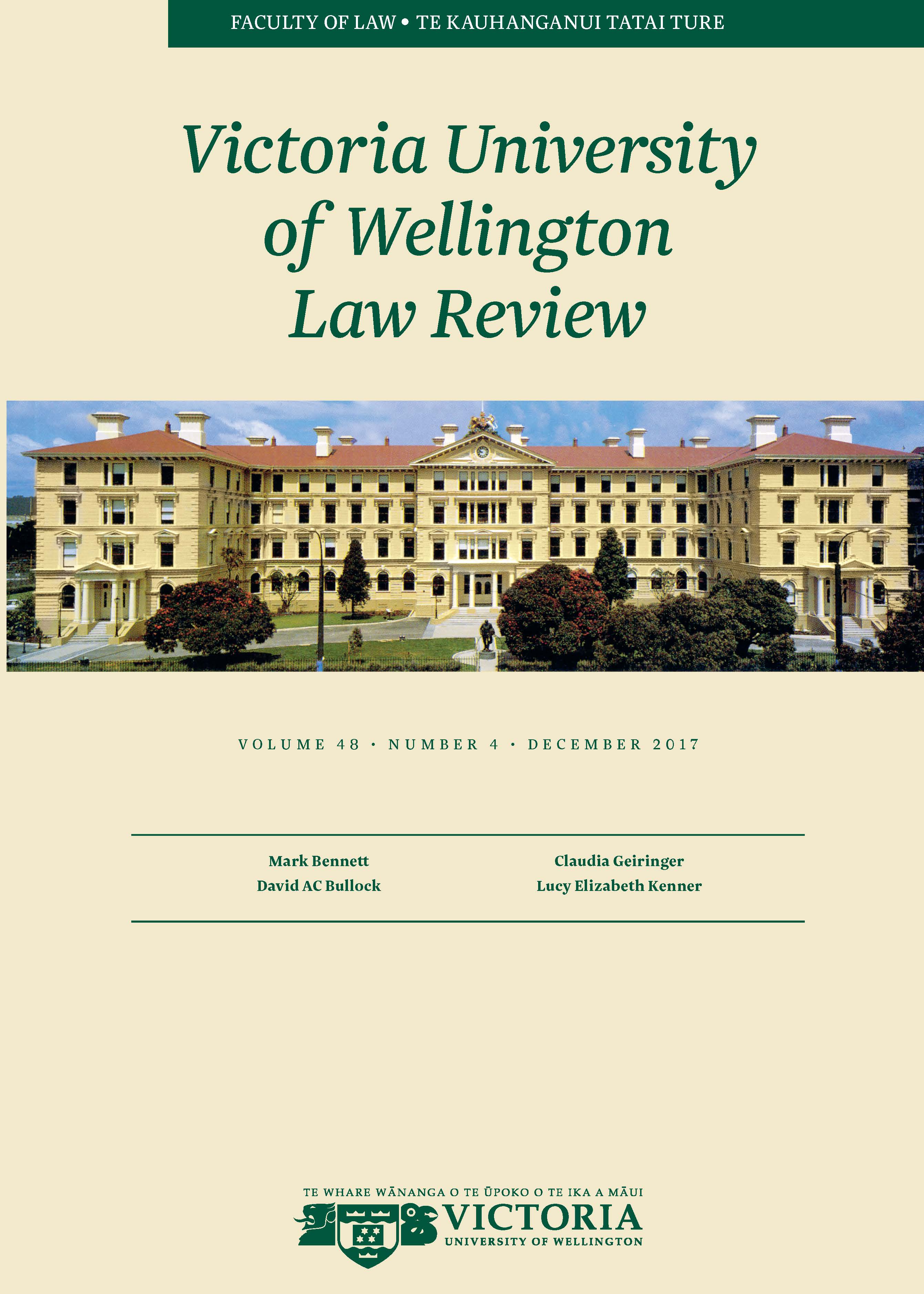The Constitutional Role of the Courts under the NZ Bill of Rights: Three Narratives from Attorney-General v Taylor
DOI:
https://doi.org/10.26686/vuwlr.v48i4.4727Abstract
In Attorney-General v Taylor, New Zealand's Court of Appeal upheld the High Court's recognition, and exercise, of an implied jurisdiction to make (non-binding) declarations of legislative inconsistency with the New Zealand Bill of Rights Act 1990 (the NZ Bill of Rights). Recognition of this novel jurisdiction says something important about the evolution of judicial-legislative relations under the NZ Bill of Rights. The question is: what exactly? This article suggests that a close analysis of the Court of Appeal's decision in Taylor in fact discloses three interwoven narratives that speak to the constitutional role of the courts in enforcing the NZ Bill of Rights: the NZ Bill of Rights as "legal benchmark"; the NZ Bill of Rights as "facilitator of inter-branch dialogue"; and the "common law-fuelled bill of rights". The article unpicks these narratives, explores the relationship between them and discusses the extent to which they succeed in accommodating or justifying the new declaratory remedy.
Downloads
Downloads
Published
How to Cite
Issue
Section
License
Authors retain copyright in their work published in the Victoria University of Wellington Law Review.


